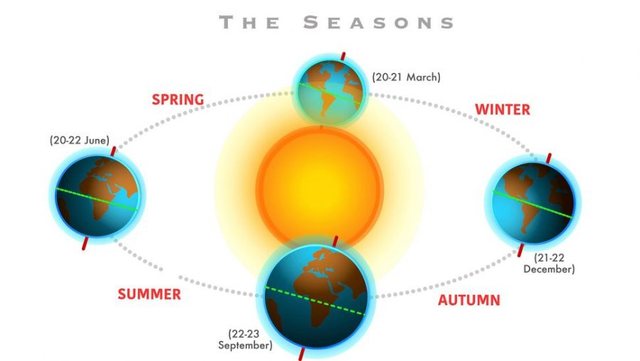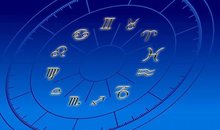
When will the shortest day and longest night of the year be?

The winter solstice marks the beginning of winter in the Northern Hemisphere and brings the shortest day and longest night of the year. In 2024, the solstice occurs on Saturday, December 21, at 4:21 a.m. EST. This astronomical event, caused by the Earth's tilt of about 23.5 degrees relative to its orbit around the Sun, also marks the summer solstice in the Southern Hemisphere.
The Earth's axial tilt causes varying exposure to sunlight in different hemispheres throughout the year, creating the seasons. During the Northern Hemisphere's winter solstice, the North Pole tilts away from the Sun, plunging it into darkness for 24 hours. At the same time, the South Pole tilts toward the Sun, experiencing uninterrupted light. On this day, the Sun appears lowest in the sky at northern latitudes, reaching its highest point directly over the Tropic of Capricorn (23.5° south of the equator).
The solstice usually falls on December 21 or 22 in the Northern Hemisphere. This variation comes from the slight misalignment of the Gregorian calendar with the Earth's orbital period of 365.25 days, which requires leap years to synchronize the calendar.
Astronomically, winter lasts from the solstice to the vernal equinox (March 19–21), covering about 89 days in the Northern Hemisphere. Meteorologically, winter encompasses the period from December 1 to February 28/29, coinciding with the coldest months of the year.
Misconceptions about winter cold
Despite the decrease in sunlight, the winter solstice is not the coldest day of the year. The oceans and land slowly release the heat accumulated during the summer, delaying the peak of the cold for several weeks. As the days lengthen after the solstice, solar radiation gradually warms the Earth.
The solstice has inspired cultural traditions around the world. At Stonehenge, in England, the sunset aligns with the Altar and Slaughter stones, symbolizing rebirth or reverence for the Sun. Similarly, Mayan structures such as those at Tulum, Mexico, incorporate alignments with the solstice, attesting to the deep connection of ancient civilizations to celestial patterns.
Contrary to popular belief, Earth is closest to the Sun (at perihelion) in early January, about two weeks after the solstice. At this point, Earth is about 91.4 million miles (147.1 million kilometers) from the Sun, compared to its furthest point (aphelion) in early July.
A perpetual celebration of change
From ancient monuments to modern gatherings, the winter solstice represents reflection and transition. It marks a pivotal moment of the year, reconnecting humanity with the rhythms of the cosmos and offering hope through the lengthening of the day.
Latest news


Morning Post/ In 2 lines: What mattered yesterday in Albania
2025-07-08 07:48:30





Marrëdhënia që s’është romancë, por s’është as thjesht kolegiale
2025-07-07 21:39:13
Citizen is asked to pay 2.5 million for a non-existent meter
2025-07-07 21:28:03




What is the ideal air conditioner temperature in summer?
2025-07-07 20:53:46
GJKKO left him in prison, Meta appeals the decision
2025-07-07 20:38:05
Where is Ronaldo after missing Diogo Jota's funeral?
2025-07-07 20:38:04

Messages from the author who killed Ilaria Sulla in Rome are revealed
2025-07-07 20:20:12
At least 91 dead in Texas floods
2025-07-07 20:12:02
Elbasan, choked by smoke, scorched by conscience
2025-07-07 19:48:16

Swarm of bees attacks citizens in France, 24 people end up in hospital
2025-07-07 19:32:03
Dementia/Hearing loss may be a warning sign
2025-07-07 19:13:06
The decision for Malltez, Gjokutaj: Boomerang for SPAK and the Court
2025-07-07 19:01:08

Former Supreme Court member acquitted of asset concealment
2025-07-07 18:36:40

WIIW expert in Politiko: Brain drain is steadily weakening the Albanian economy
2025-07-07 18:11:41
Heart health is at risk from extreme heat, here's what you should be careful of
2025-07-07 18:10:18
Today Gert Bogdani would celebrate, Edlira Çepani's touching dedication
2025-07-07 17:40:45






The striker severely accuses the Fenerbahce club: They tried to drug me
2025-07-07 16:21:03
A decomposed body is found in Kolonjë, initial suspicions
2025-07-07 16:03:31
Accident in Saranda, car hits motorcycle, one injured
2025-07-07 15:58:56

The most fertile age for men and women
2025-07-07 15:40:52
Locals, Rama candidate in 5 municipalities
2025-07-07 15:32:22
Blushi: Meta's criminal kidnapping, incomparable even to Navalny's in Russia
2025-07-07 15:20:34
Meet the iPhone 17 Pro, the main innovations in design and technology
2025-07-07 15:09:09
Why the release of Abi Malltez does not free him; much less Albania
2025-07-07 15:00:12
‘Lidhjet klienteliste’ të mjekëve mbushin recetat e pacientëve
2025-07-07 14:57:33
Poland imposes border controls with Germany and Lithuania
2025-07-07 14:48:15

Caught transporting firearms from Kosovo to Albania, young man arrested (NAME)
2025-07-07 14:37:47
Theo Hernandez flies to Saudi Arabia for medical check-ups
2025-07-07 14:26:47


Scorching heat, Greece orders mandatory work holidays
2025-07-07 13:54:25




Trump expects Netanyahu to discuss Gaza ceasefire
2025-07-07 12:54:27

GJKKO releases Jamarbër Malltezi from house arrest
2025-07-07 12:35:02
Tourism among contrasts
2025-07-07 12:31:01
IKMT action in Theth, starts demolition of unauthorized constructions
2025-07-07 12:24:18

The Tirana-Kamëz line is destroyed by urban fire
2025-07-07 12:00:24




Poor direction!
2025-07-07 11:16:01


Rama to gather the country's mayors on July 9
2025-07-07 10:43:31

Ohrid Natural Park on the way to UNESCO's "black list"
2025-07-07 10:25:58

Registrations for the new school year begin in e-Albania
2025-07-07 09:59:09
KAS decides the "fate" of the elections in four districts of the country today
2025-07-07 09:50:51
Rama does not give up on Vlora, visits the municipality again
2025-07-07 09:39:11


Fires in Gjirokastra, flames very close to cultural monuments
2025-07-07 09:12:49

Foreign exchange, the rate at which foreign currencies are sold and bought
2025-07-07 08:39:57

Horoscope, what do the stars have in store for you today?
2025-07-07 08:14:17
The week starts with scorching temperatures, the thermometer reaches 37°C
2025-07-07 07:58:36
Morning Post/ In 2 lines: What mattered yesterday in Albania
2025-07-07 07:45:15



Theologian: Behind Rama's idea for a Bektashi state in Albania, Israel is hiding
2025-07-06 20:57:48
Rama's rhetoric without standards, comparing Paris, London, New York with Vlora
2025-07-06 20:35:52
Vehicle goes off the road, driver dies in Kukës
2025-07-06 20:07:47
What is the possible agreement on the Gaza hostages and the ceasefire?
2025-07-06 19:47:09


Massive hiring in the Macedonian administration ahead of the elections
2025-07-06 18:37:19

Texas tragedy: 59 dead and 27 girls still missing after devastating floods
2025-07-06 17:48:24
